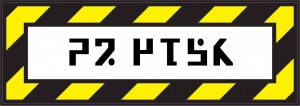Engineering Compartment
Engineering Compartment: This hull section houses the various drives and power plant.
- It is a major location of specific Ship Equipment.
- Hulls are commonly divided into two major sections, the Main Compartment and Engineering Compartment.
Description (Specifications)[edit]
Required Starship Components: Starships are constructed on the foundation of a hull, into which are fitted the drives and power plants, the fuel tankage, life support equipment, computers, controls, armaments, and other fittings that adapt it to its intended function. The total tonnage of the installed fittings cannot exceed the tonnage of the hull. [1]
The Hull: Hulls are identified by their mass displacement, expressed in tons. As a rough guide, one ton equals fourteen cubic meters (the volume of one ton of liquid hydrogen and its tank structure). When hulls are constructed, they are divided into an engineering section for the drives and the main compartment for everything else. All drives and power plants must be located in the engineering section, and only drives and power plants may be placed in that section. All other ship components, including fuel, cargo hold, living space, and computer must be located in the main compartment. [2]
There are seven standard hulls which are available at reduced prices and construction times. Any other hull must be produced on a custom basis at a cost of MCr0.1 per ton with a minimum price MCr20. Construction (or build) times for custom hulls can often be much longer than standard hull construction. Hulls vary in their requirements for drives and power plants based on tonnage. [3]
Any specific drive will be less efficient as the tonnage it must drive increases. There are twenty-four standard drive types, identified by the letters A through Z (omitting I and O to avoid confusion). Also listed are various tonnage levels for hulls; any tonnage which exceeds a listed level should be read at the next higher level. Correlating hull size with drive letter indicates drive potential. For maneuver drives, this potential is the G’s of acceleration available. For jump drives, the potential is the jump number (Jn), or jump range in parsecs. For power plants, it is power plant rating (Pn). For example, a 200-ton hull equipped with maneuver drive-A can produce 1-G acceleration; an 800-ton hull equipped with jump drive-K can produce jump-2. [4]
A ship’s hull is broadly composed of two sections:
- Engineering Compartment / Section
- Main Compartment / Section
Image Repository[edit]
No information yet available.
Engineering Section[edit]
The Engineering Section: Drives are installed in the engineering section. A non-starship must have a maneuver drive and a power plant. A starship must have a jump drive and a power plant; a maneuver drive may also be installed, but is not required. In all cases, the power plant letter must equal or exceed either the maneuver drive letter or the jump drive letter, whichever is higher. [5]
It is important to note that some drives will not produce results in some tonnages of hulls. Some drives will not fit into some hulls. Drive ratings greater than six are not available at TL-15 in 1115 IC. [6]
Maneuver / Relativistic Drives[edit]
Relativistic Drives are starship engines uses in normal space for maneuver and propulsion. They are different than the jump drive.
Jump Drives[edit]
Please see the article Jump Drive for more information.
History & Background (Dossier)[edit]
No information yet available.
References & Contributors (Sources)[edit]
| This article is missing content for one or more detailed sections. Additional details are required to complete the article. You can help the Traveller Wiki by expanding it. |
- Marc Miller. Starships (Game Designers Workshop, 1977), TBD.
- Traveller Wiki Editorial Team
- Author & Contributor: Lord (Marquis) and Master of Sophontology Maksim-Smelchak of the Ministry of Science
- ↑ Marc Miller. Starships (Game Designers Workshop, 1977), 13.
- ↑ Marc Miller. Starships (Game Designers Workshop, 1977), 13.
- ↑ Marc Miller. Starships (Game Designers Workshop, 1977), 13.
- ↑ Marc Miller. Starships (Game Designers Workshop, 1977), 13.
- ↑ Marc Miller. Starships (Game Designers Workshop, 1977), 13.
- ↑ Marc Miller. Starships (Game Designers Workshop, 1977), 13.
